Prepare to be mesmerized by the stunning beauty of Andalusia as you embark on a picturesque road trip from Malaga to Seville. Wind your way through breathtaking landscapes adorned with olive groves, rolling hills, and rugged mountains, pausing to discover hidden gems in quaint villages along the route. Immerse yourself in the rich blend of cultures found in this region, where Moorish influences mingle with Spanish tradition, creating a fascinating atmosphere at every turn. Whether you’re drawn to the historical allure of ancient cities or the tranquility of the countryside, this journey promises an unforgettable exploration of Andalusia’s diverse landscapes and charming towns
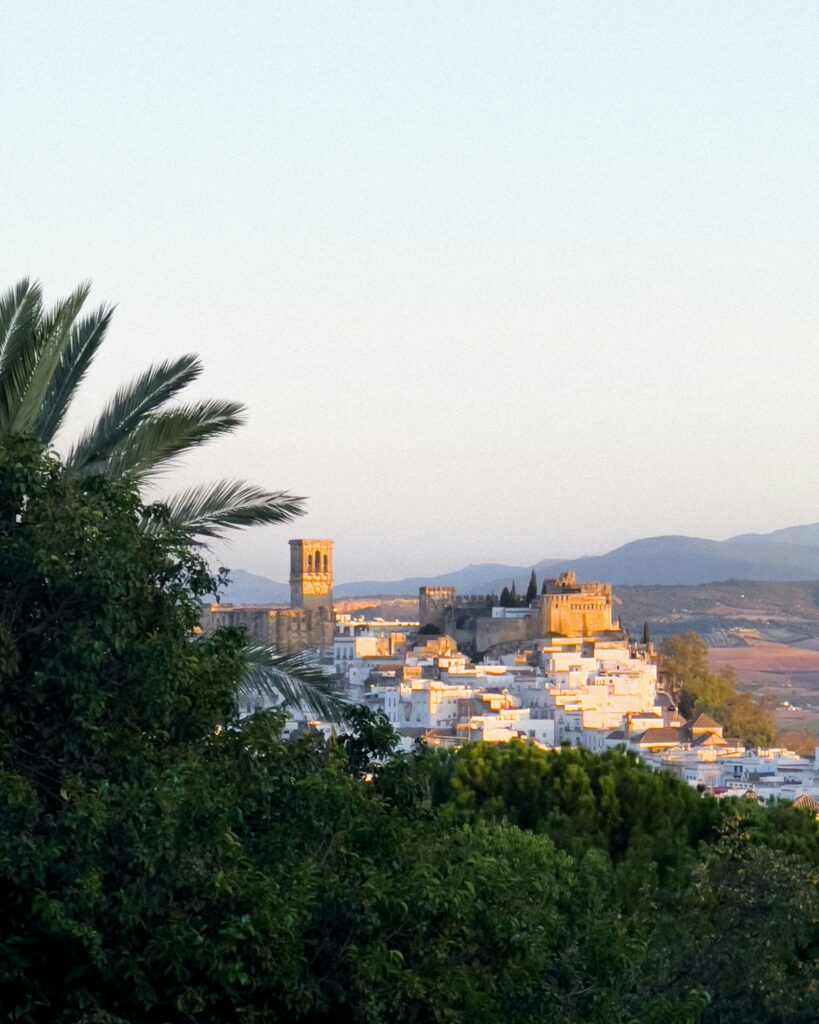
*Note some of the links feature affiliate links. I only recommend items that I 100% love and think you will too!
How to Get to Seville from Malaga
Bus or Train?
Traveling from Malaga to Seville offers travelers a variety of transportation options. Each provides a unique experience and perspective on the stunning Andalusian landscape. For those seeking convenience and efficiency, the most popular choice is undoubtedly the train. Renfe operates high-speed AVE trains between Malaga and Seville. This offers a swift journey that takes approximately 2 hours and 30 minutes. It has comfortable seating and onboard amenities, including WiFi and refreshments. Passengers can relax and enjoy the scenic ride as the train glides through picturesque countryside and past historic towns along the route. Additionally, travelers can choose between various departure times throughout the day, providing flexibility to fit their schedule.
Travelers also have the option of taking a bus from Malaga to Seville. This provides a cost-effective and comfortable alternative to trains and rental cars. Alsa is the main bus companies operate frequent services between the two cities. Journey times typically ranging from 3 hours to 4 hours, depending on the route and stops along the way. Bus services offer convenient departure times throughout the day. passengers can choose a schedule that best suits their travel plans.
Option to Rent a Car
Alternatively, for those who prefer the freedom of the open road and the opportunity to explore at their own pace, renting a car offers an excellent option. The journey from Malaga to Seville by car takes approximately 2 hours and 45 minutes. Travelers take the via the A-92 highway and you will traverse through stunning landscapes of rolling hills, olive groves, and quaint villages. Along the way, you can have the flexibility to make detours and stop at points of interest. An example is the charming town of Ronda or the historic city of Antequera.
With the freedom to set your own itinerary and soak in the beauty of Andalusia at your leisure, a road trip from Malaga to Seville promises an unforgettable adventure. It will be filled with scenic vistas and cultural discoveries. In this article, we fill focus on the option to rent a car and enjoy a scenic roadtrip from Malaga to Sevilla.
Road Trip to Seville from Malaga
The picturesque drive from Malaga to Seville takes you through some of the most scenic parts of Andalucia. Winding mountain roads, whitewashed villages, olive groves, and rolling hills set the stage for an unforgettable road trip experience.
This article will take you through the journey from the Mediterranean coast to the Guadalquivir river valley, highlighting some of the top stops and sights along the way. From the cliffside town of Ronda to the grand Moorish architecture of Seville, you’ll get a taste of inland Andalucia’s history, culture, and jaw-dropping landscapes. We’ll also provide tips on the best places to stop for a bite, stretch your legs, or simply soak in the views.
So get ready to fill up the tank and buckle up for a drive through the heart of southern Spain. This route is full of surprises around every turn.
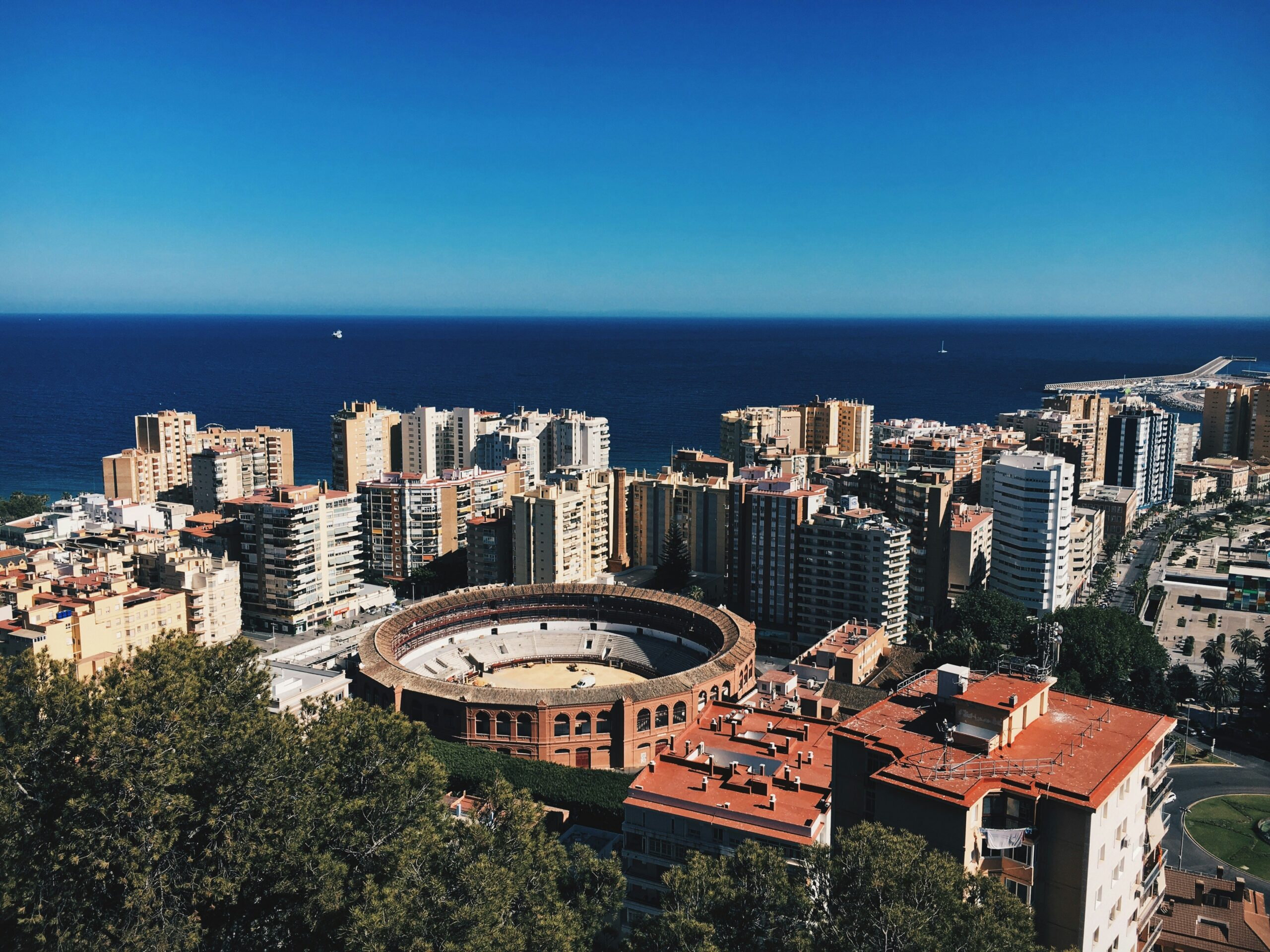
Starting in Malaga
Known as the capital of the Costa del Sol, Malaga is a port city with over 3,000 years of history. Founded by the Phoenicians in the 8th century BC, Malaga later came under Roman rule, followed by periods under the Moors and the Catholic Monarchs.
Malaga has a charming historic center with winding cobblestone streets, tapas bars, and beautiful plazas. Top sights include the Roman Theater, the Moorish Alcazaba fortress, and the Cathedral of Malaga overlooking the port.
Malaga is also the birthplace of Pablo Picasso, and is home to several museums dedicated to his life and work, including the Picasso Museum in the city’s charming old quarter. Visitors can also tour Picasso’s childhood home.
In addition to history and art, Malaga has plenty of sun, sand, and sea to enjoy. Sip local sweet Malaga wine along the waterfront promenade while taking in views of luxury yachts in the harbor. The nearby beaches of La Malagueta and Pedregalejo are popular for swimming and sunbathing.
When it comes to food, seafood reigns supreme in Malaga. Be sure to try espetos (fresh sardines grilled over an open fire), fried fish, and pescaíto frito (assorted fried seafood). Wash it all down with a cold glass of cerveza (beer).
Recommended Tours and Activities
Experience the essence of Malaga through an array of captivating tours and activities. Sail into the breathtaking sunset aboard a luxurious catamaran, taking in the coastal beauty and enjoying a refreshing glass of cerveza. Immerse yourself in relaxation at Hammam Al Ándalus, where an indulgent massage awaits amidst the tranquil ambiance of ancient baths. For adrenaline-seekers, embark on a thrilling day trip to Caminito del Rey, traversing dizzying heights along the famed footbridge.
Dive into the passionate rhythms of flamenco at Alegría, where fiery performances ignite the stage with energy and emotion. Delve into Malaga’s rich history with a guided tour of the Alcazaba and Roman Theatre, exploring ancient ruins and architectural wonders. Lastly, uncover the secrets of the historical center and majestic Cathedral on a captivating two-hour walking tour, delving into the city’s vibrant past and cultural heritage. With each tour offering a unique perspective on Malaga’s enchanting allure, your journey promises unforgettable memories and immersive experiences.
Learn more: Malaga: How Many Days Do You Really Need? The Insider’s Guide
Malaga Travel Tips
Discover the ultimate guide to Malaga, from choosing the perfect neighborhood and hotel for your stay to uncovering the coastal magic of its nine best beaches. Learn insider tips on how many days you really need to explore Malaga and find essential advice for traveling with a baby.
Malaga: How Many Days Do You Really Need? The Insider's Guide
Discover Malaga's ideal itinerary with our insider's guide on how many days you need. From must-visit attractions to hidden gems, we've got expert recommendations for your unforgettable trip.
Malaga Where to Stay: The Best Neighborhoods and Hotels
Explore Malaga's top accommodations with our guide to the best neighborhoods and hotels. From historic Old Town to seaside luxury in La Malagueta, find your perfect spot for a memorable stay.
Malaga with a Baby: A Guide to Malaga for Little Ones
Embark on a stress-free family adventure in Malaga with our guide for parents traveling with babies, offering essential tips and recommendations for a memorable experience.
Coastal Magic: The 9 Best Beaches Malaga Has to Offer
Explore Malaga's top nine beaches, from tranquil coves to bustling golden sands, with our comprehensive guide, promising unforgettable seaside experiences for relaxation, adventure, and breathtaking views.
First Stop – Ronda
Ronda is the first must-stop on the scenic drive from Malaga to Seville. This mountaintop city is famous for its dramatic El Tajo gorge that divides the old and new parts of the town. Ronda has a storied history stretching back to the 9th century when it was founded by the Romans.
Today, Ronda is known as the birthplace of modern bullfighting and the home of Spain’s oldest bullring. Many fans of bullfighting consider Ronda’s Plaza de Toros one of the most important and iconic bullrings in Spain. The arena itself is a striking two-tiered stone structure built in 1785 that is still used for bullfights today. Visitors can tour the bullring and its museum to learn about Ronda’s deep connection to bullfighting.
In addition to bullfighting history, Ronda has many interesting attractions for visitors. The Puente Nuevo is the impressive 18th century stone bridge that spans the gorge and offers panoramic views. The old town on the north side of the gorge features charming cobbled streets lined with restaurants and shops. The Baños del Carmen is an historic bathhouse built atop Arab baths that also has stunning views of the gorge. Ronda’s palm tree-filled Plaza Duquesa de Parcent is a lovely spot to relax and enjoy the scenery. Whether taking in the dramatic views or exploring Ronda’s long and fascinating past, this first stop on the road from Malaga to Seville is a true highlight.
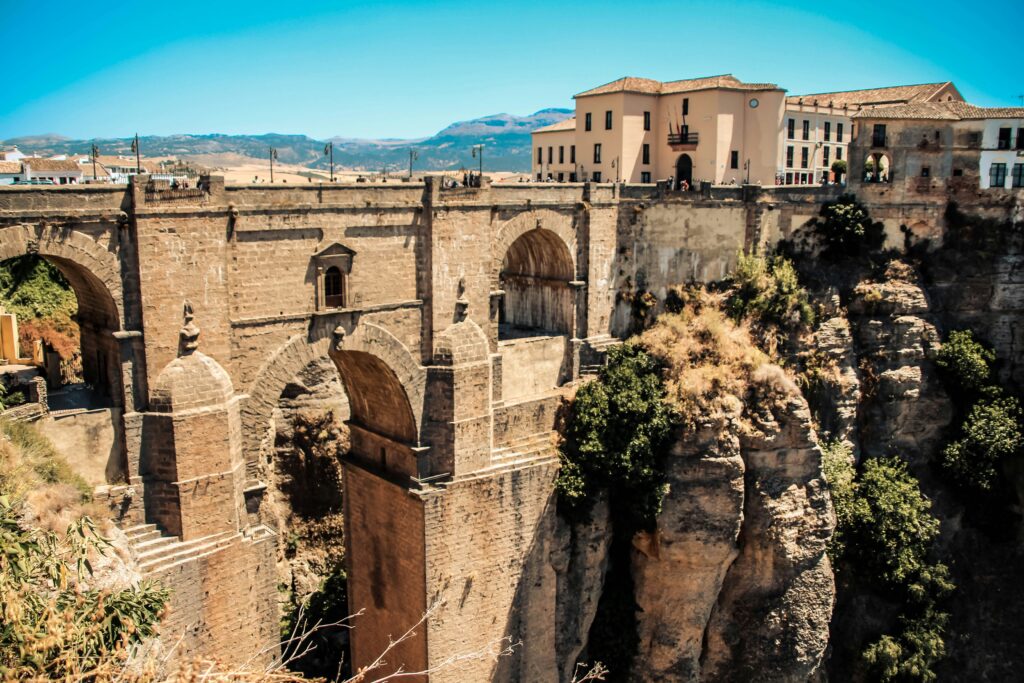
Winding Mountain Roads
Leaving Ronda, the drive really begins to showcase the dramatic and rugged beauty of Andalucia. As you take to the winding roads through the mountains, be prepared for breathtaking vistas around every hairpin turn. The endless olive groves blanketing the hillsides make this region famous for its olive oil production. Quaint whitewashed villages cling to the mountainsides overlooking the valleys below. This is the quintessential scenery that people imagine when they think of rural Spain.
Stop to take photos of the panoramic views of mountains stacked upon mountains fading into the distance. The winding roads provide the perfect opportunity to take your time and soak in the romantic landscapes of olive trees, winding roads, and white pueblos. Be sure to stop in one of the villages along the way to explore their narrow cobblestone streets and sample local cuisine. The mountain villages seem lost in time, untouched by the modern world. Let yourself get lost on the backroads through the stunning vistas on the journey from Ronda to Seville.
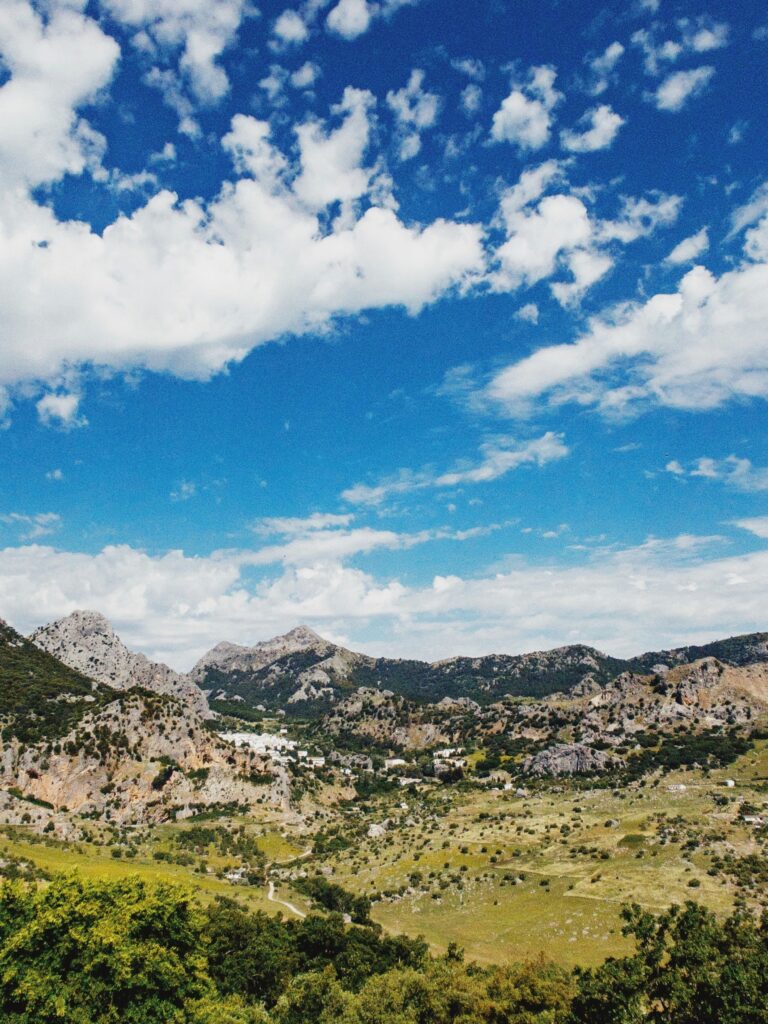
Grazalema
As you journey from Malaga to Seville, make sure to include a stop in the picturesque town of Grazalema. Tucked away in the Sierra de Grazalema Natural Park, this charming Andalusian village is renowned for its stunning natural beauty and rich history. Grazalema is the perfect place to immerse yourself in the tranquility of the Spanish countryside while discovering its captivating sights.
Attractions
One of the main attractions in Grazalema is its breathtaking landscapes, which offer endless opportunities for outdoor exploration. Take a leisurely hike along one of the many scenic trails that wind through the surrounding mountains, offering panoramic views of lush valleys and rugged peaks. Don’t miss the chance to visit the Salto del Cabrero, a stunning waterfall nestled within the park, where you can marvel at the cascading waters and enjoy a refreshing dip in the natural pools.
In addition to its natural wonders, Grazalema boasts a rich cultural heritage that is evident in its charming streets and historic landmarks. Explore the town’s picturesque whitewashed buildings adorned with colorful flower pots, and wander through its quaint squares and winding alleys. Be sure to visit the Church of San Juan Bautista, a beautiful example of Andalusian architecture dating back to the 18th century, and the Plaza de España, a lively hub where locals gather to socialize and enjoy the sunshine. With its scenic beauty and cultural charm, Grazalema offers a delightful respite on your road trip from Malaga to Seville, providing a glimpse into the authentic essence of Andalusia.
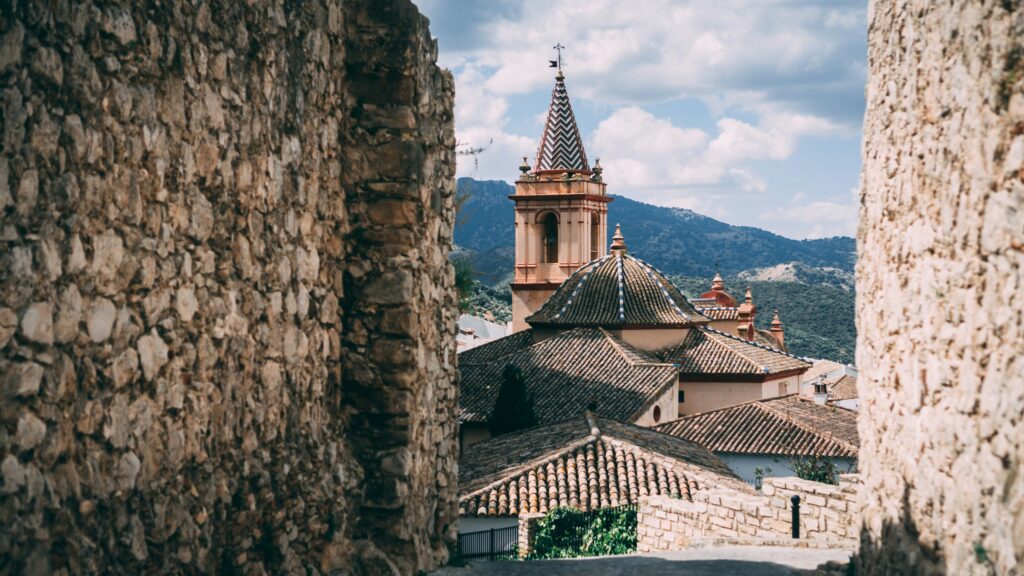
Zahara de la Sierra
As you journey from Malaga to Seville, don’t miss the enchanting town of Zahara de la Sierra nestled in the heart of the Andalusian countryside. This picturesque village is perched atop a dramatic hillside, offering panoramic views of the surrounding olive groves and the shimmering turquoise waters of the Zahara-El Gastor Reservoir.
Main Attractions
One of the main attractions in Zahara de la Sierra is its stunning Moorish castle, which dates back to the 12th century. Take a leisurely stroll through the narrow streets of the old town to reach the castle, where you can explore its ancient walls and towers while soaking in the breathtaking vistas of the Sierra de Grazalema Natural Park. Don’t miss the opportunity to visit the charming Church of Santa María de la Mesa, an architectural gem with its Mudejar-style bell tower and intricate carvings.
In addition to its historical landmarks, Zahara de la Sierra offers ample opportunities for outdoor adventure and relaxation. Embark on a scenic hike along one of the many trails that wind through the surrounding mountains, or rent a kayak to paddle along the tranquil waters of the reservoir. After a day of exploration, unwind at one of the local cafes or restaurants, where you can savor traditional Andalusian cuisine while enjoying the laid-back atmosphere of this charming village. With its stunning vistas and rich history, Zahara de la Sierra is a must-visit destination on your road trip through Andalusia, offering a glimpse into the region’s natural beauty and cultural heritage.
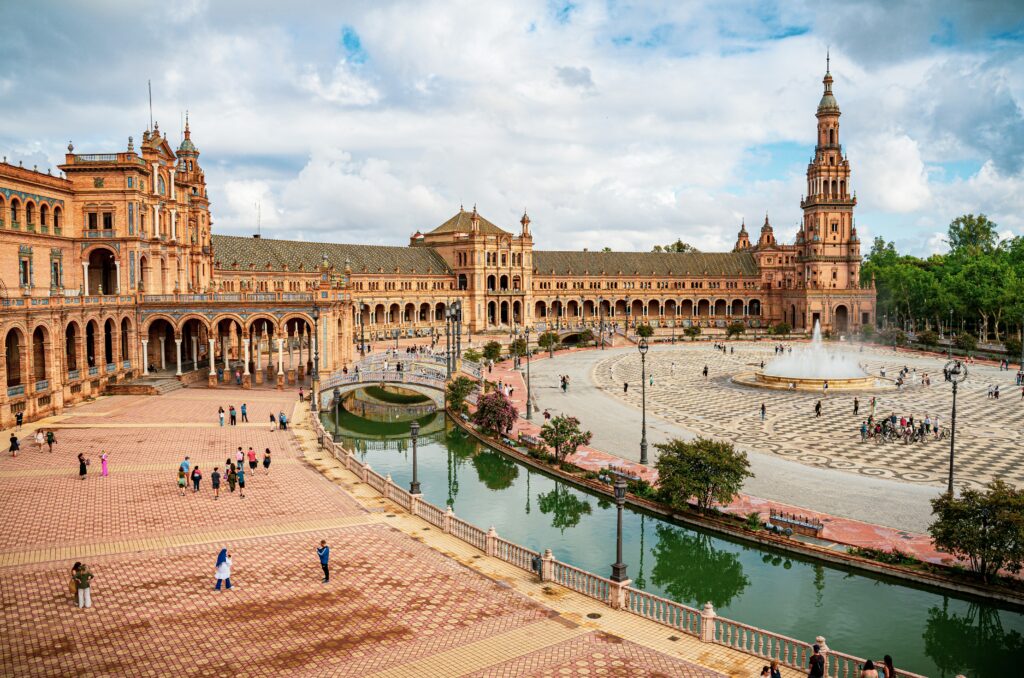
Arrival in Seville
After the winding roads through the mountains, you’ll finally arrive in Seville, the capital of Spain’s southern Andalusia region. Known as one of the birthplaces of flamenco, Seville combines Moorish influences with traditional Spanish culture.
As you enter the outskirts of the city, you’ll likely notice the modern infrastructure mixed with beautiful historic buildings. But at the core of Seville is the enchanting old town, with its narrow cobblestone streets, tapas bars, and charming plazas.
The Guadalquivir River also snakes through the city, lined with pathways, gardens, and monuments. It’s one of Seville’s defining natural landmarks.
But the real magic of Seville reveals itself once you dive into its streets and neighborhoods. From the grand Plaza de España to the winding alleys of the Santa Cruz neighborhood, Seville begs to be explored on foot.
As the capital of Andalusia, Seville holds an important place in Spanish culture and history. It’s one of the country’s most populated cities and popular tourist destinations. The local Sevillanos have a passion for their hometown, evident in the lively festivals, culture, and hospitality.
After the scenic mountain roads, Seville opens up to you as a metropolitan gem grounded in tradition. It’s the perfect place to immerse yourself in authentic Spanish culture.
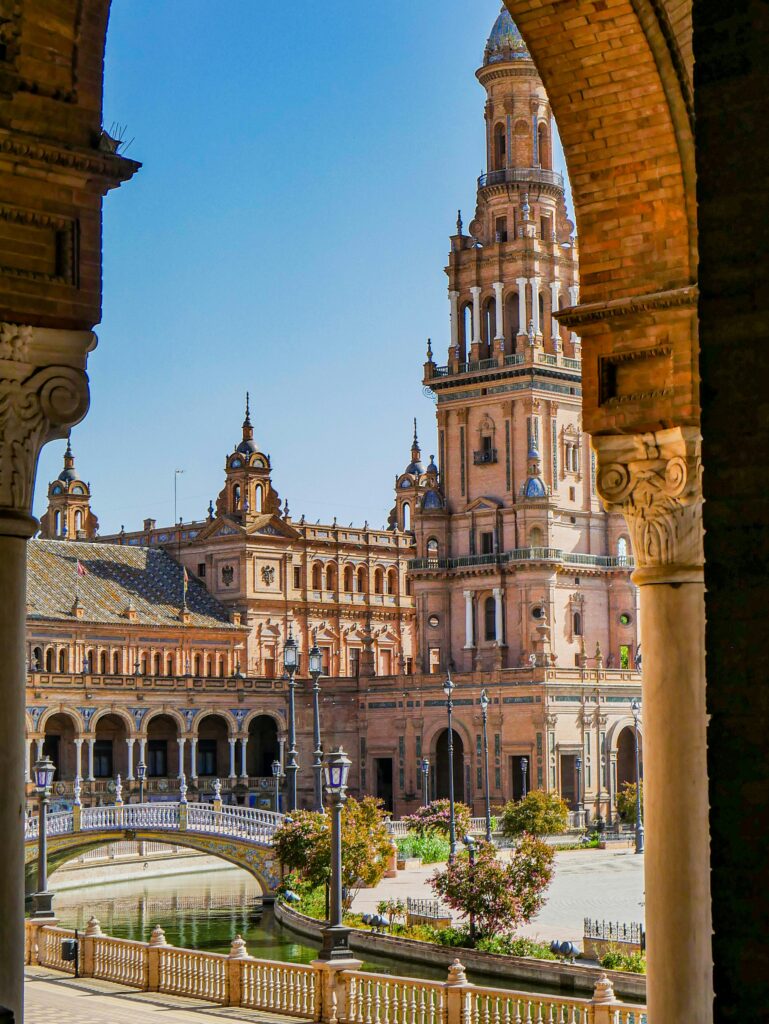
Seville’s Old Town
Seville’s Old Town, also known as the Casco Antiguo, is the historic heart of this vibrant Andalusian city. Cobblestone streets weave their way through picturesque plazas and peaceful corners perfect for people watching. The Santa Cruz quarter is particularly charming, with its whitewashed buildings, wrought-iron balconies overflowing with flowers, and winding alleys just begging to be explored.
Tapas bars and restaurants line the lively streets, their patios spilling out with locals and tourists alike indulging in small plates of famous Andalusian delicacies like jamon Iberico, fried fish, and gazpacho. Guitar music drifts out from flamenco taverns as dancers’ heels click on the floors inside. The sunny plazas come alive in the evenings as families and friends gather over glasses of sherry and plates heaped with tapas.
Wandering through the quarters of Seville’s Old Town, one feels immersed in the history and culture of southern Spain. It’s a place where time seems to pass just a little bit slower, inviting you to sit a while and take in the beauty.
The Alcázar
The Alcázar of Seville stands as a testament to over a thousand years of architectural history. Originally constructed in 913 CE as a fort under Muslim rule, the Alcázar has undergone multiple expansions,rebuilds, and repurposing. This has resulted in a unique fusion of architectural elements.
Architecture Through Time
The towering curtain walls of the Alcázar dating back to the 10th century Moorish castle highlight its strategic position along the Guadalquivir river. Inside, the Patio de las Doncellas showcases Nasrid-style stucco work and tiling. The 14th-century additions by Pedro I in the Mudéjar style, featuring intricately carved wood ceilings, elevate the palace’s magnificence. The Salón de Embajadores, with its resplendent Arabic geometric patterns and calligraphy, represents the peak of Alcázar’s grandeur.
Renaissance Influence
The 16th-century Palacio de Carlos V, built in Renaissance style, adds another layer to the Alcázar’s narrative. Each area unfolds with visual delights. You’ll see everything from lavish tilework to carved reliefs. This creates a historical journey through diverse rulers and cultures within one monumental destination.
Seville Cathedral
Seville Cathedral, also known as the Cathedral of Saint Mary of the See, stands as Seville’s architectural masterpiece. It is the largest Gothic cathedral globally and the third-largest church. Its construction began in the 15th century, replacing a former mosque. Over the centuries, a blend of Gothic to Baroque styles has shaped the cathedral’s awe-inspiring design.
Gothic Grandeur
When you enter, you are greeted by soaring vaulted ceilings, ribbed ceilings, flying buttresses, and stained glass windows. These create a sense of grandeur. The Gothic interior, with its intricate details, evokes a feeling of awe and insignificance. Highlights include Christopher Columbus’s elaborate tomb, the gilded altar, choir stalls, Capilla Mayor, and the treasury, showcasing precious artworks.
La Giralda and Panoramic Views
The cathedral’s bell tower, La Giralda, originally a minaret built in the 12th century, offers spectacular panoramic views of Seville. Visiting the cathedral is a must to fully appreciate the scale and intricate Gothic details. This is what makes it one of Spain’s most impressive cathedrals.
Evening in Triana
After a day of exploration, Triana, provides a vibrant and bohemian atmosphere as the sun sets. Once home to sailors, ceramics makers, and flamenco dancers, this historic neighborhood offers a lively experience.
Bohemian Vibes
Wander through narrow cobblestone streets filled with tapas bars and flamenco clubs. Sit and listen to the energetic strumming of guitars and clapping hands. Indulge in local sherry and fresh tapas while witnessing impromptu flamenco shows. This is magical under the orange glow of streetlamps reflecting off the river. Triana offers a unique glimpse into Andalusian culture, showcasing passion and creativity.
Recommended Tour
Immerse yourself in the city’s rich history and vibrant culture with a guided tour of the iconic Seville Cathedral. You’ll get priority access which ensures you won’t miss a moment of awe-inspiring beauty. Combine your cathedral visit with a guided tour of the Alcazar. This will allow you to explore two of Sevilla’s most magnificent landmarks in one unforgettable experience. Be sure to get a taste of Sevilla’s passionate flamenco traditio. Don’t miss the Casa de la Memoria Flamenco Show. This is where talented performers bring the art form to life in an intimate setting.
Take to the waters of the Guadalquivir River on a scenic cruise. You can soak in panoramic views of the city’s skyline and historic landmarks. For a quintessentially Spanish experience, indulge in a sangria tasting with rooftop views. Or you can embark on an authentic and romantic horse-drawn carriage ride. This will take you through the charming streets of Sevilla. Every turn reveals a new glimpse of Andalusian charm and allure. With these recommended tours, Sevilla invites you to discover the magic and beauty of Spain’s cultural heartland.
Conclusion
The road trip from Malaga to Seville unfolds through mountains, villages, and olive groves. You will be amazed by the diverse natural beauty of Andalusia. You must see Seville’s old town, Alcázar palace, Seville Cathedral, and the lively Triana district. They provide a cultural immersion into Moorish and Christian heritage. The journey promises a memorable Spanish road trip, offering scenic variety, cultural exploration, and exciting discoveries along the way.
FAQ’s
Is there a direct train from Malaga to Seville?
Yes, there is a direct train connection between Malaga and Seville. Renfe, the national railway company of Spain, operates direct trains on this route.
How long is the high-speed train from Malaga to Seville?
The high-speed train journey from Malaga to Seville typically takes around 2 hours and 30 minutes. However, travel times may vary slightly depending on the specific train service and any intermediate stops.
Is it better to stay in Seville or Malaga?
The choice between staying in Seville or Malaga depends on your preferences and travel itinerary. Seville is known for its rich history, stunning architecture, and vibrant culture, making it a popular destination for tourists. On the other hand, Malaga offers beautiful beaches, a lively atmosphere, and easy access to attractions like the Picasso Museum and the Alcazaba fortress. Consider your interests and the experiences you seek to decide which city aligns better with your travel plans.
How much does the train cost from Malaga to Seville?
The cost of a train ticket from Malaga to Seville varies depending on factors such as the type of train (high-speed or regional), class of service, and time of booking. Generally, prices range from around €30 to €60 for standard class seats on high-speed trains. It’s recommended to check the Renfe website or other ticketing platforms for the most accurate and up-to-date pricing information.
Further Reading
- Flamenco Magic: Exploring the Best Flamenco Shows in Andalucia
- Pack Like a Pro: The Ultimate Europe Packing List
- How to Plan the Perfect Trip to Europe: Tips and Tools
- Malaga Where to Stay: The Best Neighborhoods and Hotels
- Coastal Magic: The 9 Best Beaches Malaga Has to Offer
- Malaga: How Many Days Do You Really Need? The Insider’s Guide
- Malaga with a Baby
- Andalucia Experience Guide by Lonely Planet
- Andalucia Classic Guide by Lonely Planet
Seville Travel Tips
Explore Seville travel tips for your Andalusian adventure! From road trips Malaga to Seville, family attractions, beating the heat with kids, to navigating trains Madrid-Seville, uncover insider tips for a smooth journey. Don't miss our guide to Ronda's highlights or Lonely Planet's Andalucia guides for expert advice on exploring the region. Unlock Seville and beyond with us!
Andalucia
Lonely Planet's Andalucia guide is your ultimate companion for exploring the diverse wonders of the region, from the ancient streets of Seville to the tranquil beaches of Costa del Sol, providing expert recommendations for every traveler's itinerary.
Seville with Kids: How to Beat the Heat and Have a Blast
Discover how to beat the heat and create unforgettable family memories in Seville, with expert tips and family-friendly activities ensuring a blast for kids and adults alike.
Experience Andalucia
Lonely Planet's Experience Andalucia offers an immersive journey through the region's vibrant cities, rich Moorish heritage, and delectable tapas scene, guided by local experts to uncover unforgettable experiences and hidden gems, providing an escape from the ordinary.
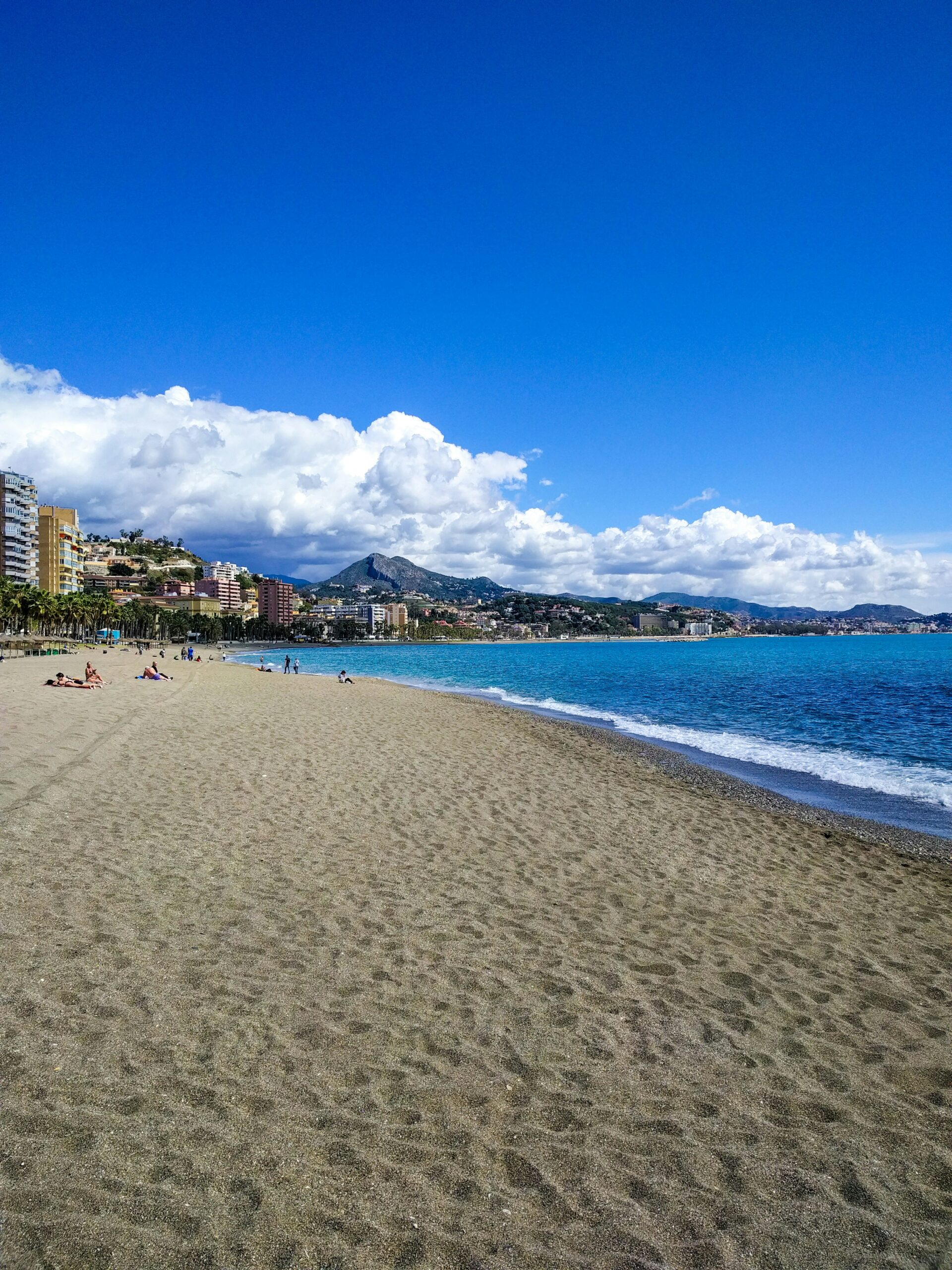
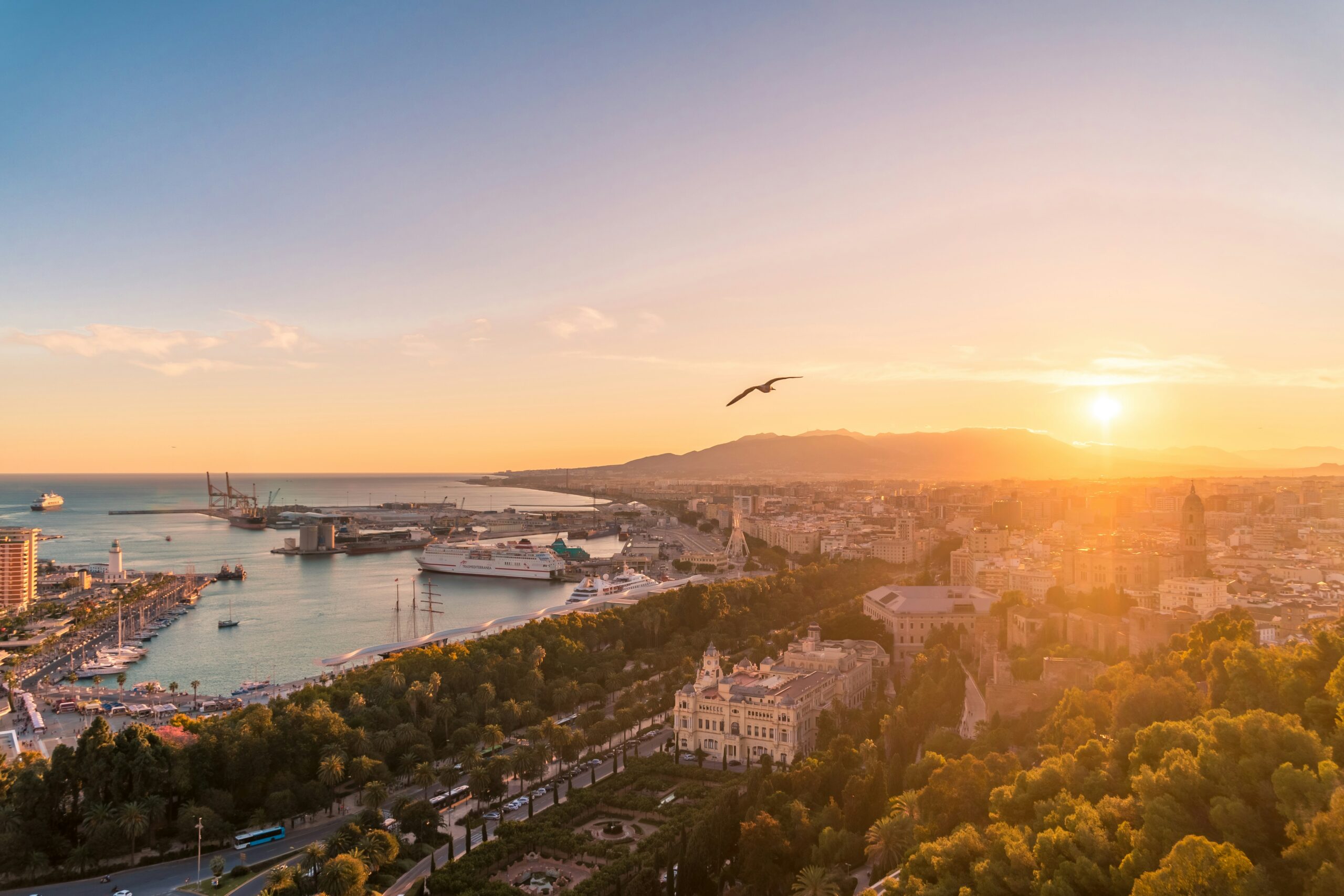
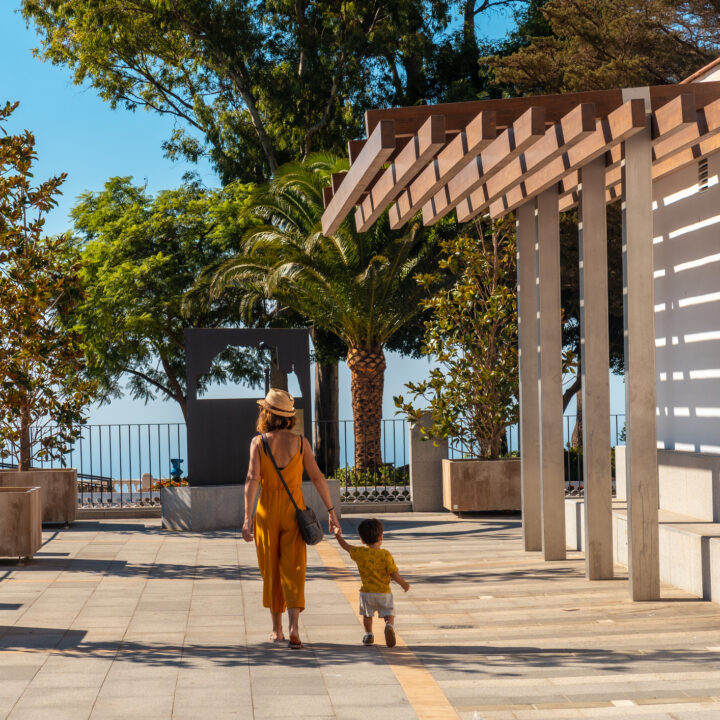

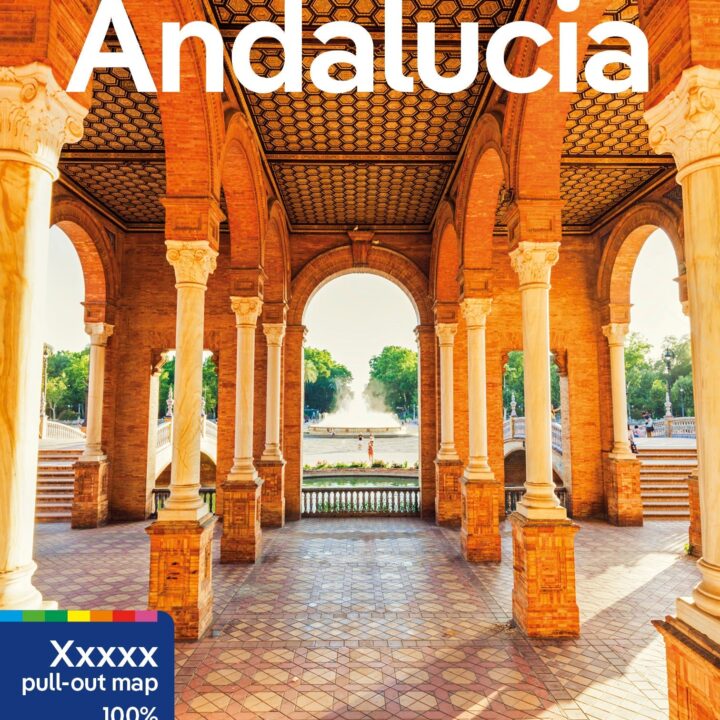
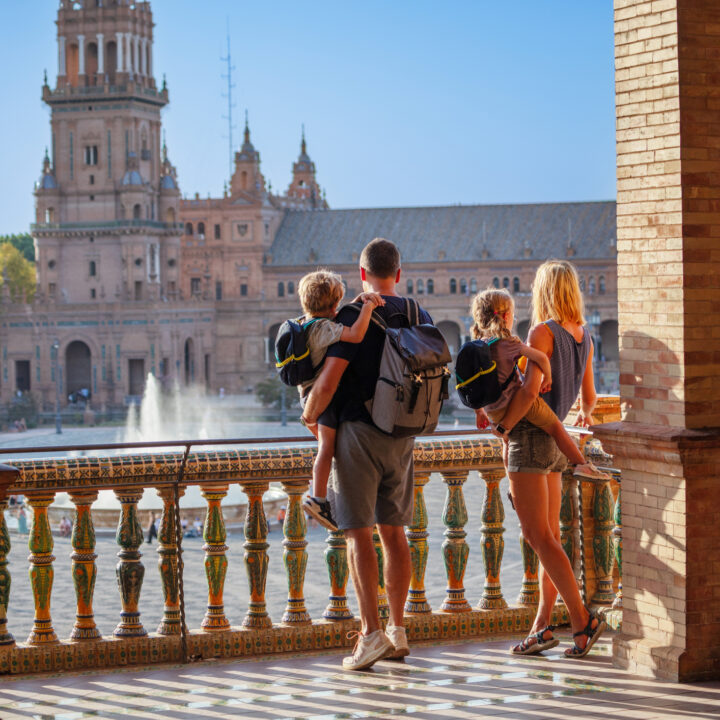
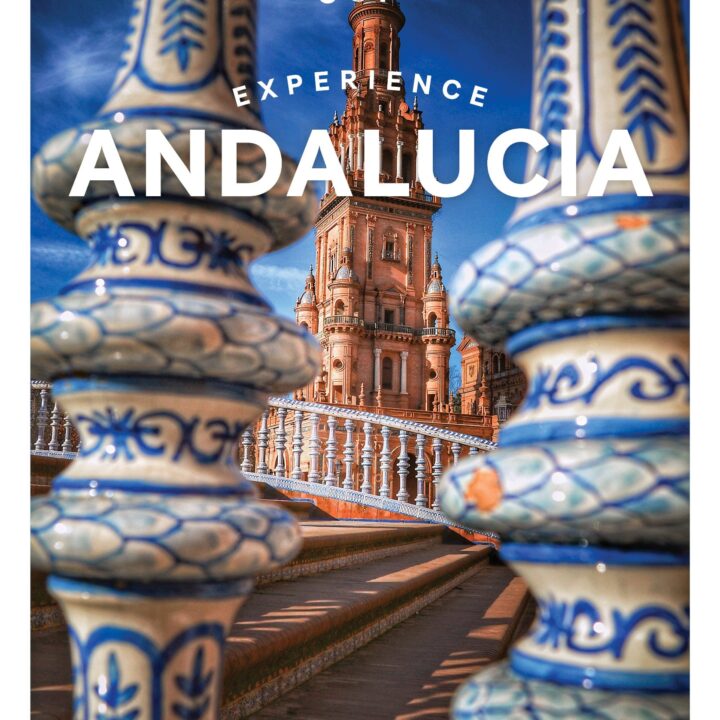
Be the first to comment